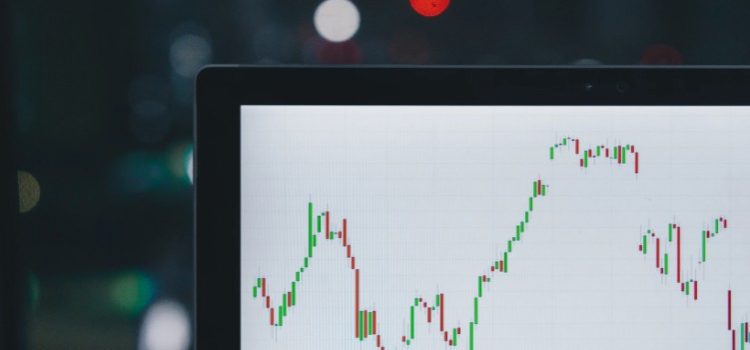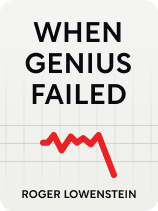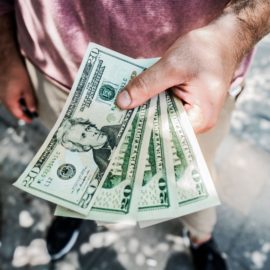

This article is an excerpt from the Shortform book guide to "When Genius Failed" by Roger Lowenstein. Shortform has the world's best summaries and analyses of books you should be reading.
Like this article? Sign up for a free trial here.
Why did the hedge fund LTCM collapse? What economic crises contributed to the downturn?
The year 1997 was the beginning of the end for LTCM, as it succumbed to the enormous risks it had taken on, along with the combined pressures of the 1997 Asian financial crisis and the 1998 Russian financial crisis. We’ll explore how unexpected volatility began to sink the fund.
Check out the events that led to this hedge fund collapse.
1997: The Asian Financial Crisis Begins
In 1997, the currencies of several Asian countries—Indonesia, Malaysia, the Philippines, South Korea, and Thailand, the so-called “Asian tigers”—collapsed. In the years leading up to the crisis, investors had mistakenly believed that the economies of these nations were on sounder footing than they actually were. As a result, when these currencies collapsed, those investors found that their money was now tied up with these sharply devalued currencies. The crisis spread to the US as the American stock market suffered a 7% decline in a brutal selloff on October 27, 1997.
The crisis threatened to undermine LTCM’s whole strategy, creating the first step in the hedge fund’s collapse. In a turbulent market, asset prices tend to fall together: There aren’t price discrepancies, writes When Genius Failed by Roger Lowenstein, because everything collapses at the same time. There wouldn’t be arbitrage opportunities to exploit: There would instead be a liquidity crisis where everyone was trying to sell their much-discounted assets at the same time, LTCM included. This had the potential to wipe out the fund.
The Russian Collapse and the Flight to Treasurys
The collapse of the Russian ruble in August and September 1998 exacerbated the impending liquidity crisis in global financial markets, intensifying the fund’s difficulties. Russia defaulted on its financial obligations, sending shockwaves throughout global financial markets. This triggered widespread panic as investors sought refuge in US Treasury securities.
For LTCM, this situation led to a noticeable difference in prices between US Treasury bonds and other financial products. This difference influenced a broad array of assets, including common ones like stocks and foreign bonds, as well as more complicated financial tools like options, derivatives, and swaps. People rushed to invest in Treasurys, which are seen as safe because they’re backed by the US federal government. This surge in demand caused the prices of Treasurys to go up while the prices of everything else went down.
On the Wrong Side of the Trades
Compounding LTCM’s woes was the fact that their existing positions were based on the expectation of the opposite scenario. Their entire strategy was built on the belief that markets overstated risk and that the price differences between risky assets and safe assets would eventually converge. Consequently, they often held the riskiest and most volatile assets in various markets. When universal panic gripped the market in 1998 following the Russian crisis, nobody had any interest in purchasing LTCM’s holdings, and everyone was eager to rid themselves of these toxic assets. LTCM found itself in a dire predicament, with seemingly no way out.
With the value of their assets now reduced to a fraction of their former worth, their debts constituted an even larger portion of their balance sheet. By September, LTCM was operating with a highly leveraged position of $55 in leverage for every $1 in assets and the fund was hemorrhaging eight figures per day.
(Shortform note: For a true sense of the scale of LTCM’s leverage, financial experts write that a debt ratio (total debt divided by total assets) of greater than 100% is often considered risky for investors. But LTCM had a debt ratio of 5,500%, vastly greater than what most analysts would consider safe. However, it’s worth noting that the debt ratio, while useful for assessing a company’s financial standing, doesn’t provide information about the type of debt or its associated costs. Different debts may have varying terms and interest rates, impacting a company’s financial stability differently. Additionally, the debt ratio relies on accounting information that can be manipulated for external reporting.)
The Panic Market Trumps the Rational Market
Lowenstein writes that the market was characterized by panic, representing a state of irrationality. Human emotions, including greed and fear, were driving economic decisions, highlighting the flawed and irrational nature of such decisions. The market deviated from a normal distribution pattern. LTCM’s quantitative models were incapable of accounting for this irrationality, as they were built upon a framework assuming rational and utility-maximizing decisions.
(Shortform note: Some economists have written that economic models need to be updated to consider the influence of human psychology on economic decision-making. Behavioral economics recognizes that individuals don’t always make rational choices and can be influenced by cognitive biases, emotions, and social factors. Furthermore, there is a push to incorporate the principles of complex system dynamics into economic modeling. Complex systems theory acknowledges that economic systems are interconnected and subject to feedback loops, making them inherently unpredictable and susceptible to sudden shifts and crises.)
An Orchestrated Bailout
As the house of cards that was LTCM collapsed, the New York Federal Reserve Bank stepped in to orchestrate a bailout. According to Lowenstein, the Fed played a pivotal role in assembling a consortium of Wall Street banks to stabilize and wind down the troubled LTCM. The final terms of the rescue package involved a consortium of over a dozen major banks collectively contributing more than $3.5 billion and acquiring 90% of whatever value remained in the fund. In a stark transformation, the original partners retained only a 10% stake as an incentive for their assistance in winding down the fund and ensuring creditors were made whole.
The partners found themselves effectively wiped out, and the banks were left to recoup whatever assets remained. The impact extended beyond the fund; it significantly affected the partners themselves, many of whom had substantial personal wealth tied up in the fund. The collapse pushed several of them into personal bankruptcy.
| John Meriwether’s Post-LTCM Career Although Meriwether avoided personal bankruptcy following LTCM’s collapse, his later career would be marked by unsuccessful fund ventures. Just a year after the demise of LTCM, Meriwether founded another company, JWM Partners. Its flagship fund, Relative Value Opportunity II, reached a net asset value of about $1.6 billion at its peak but declined by more than 44% following the 2007 financial crisis. Perhaps unchastened by his experience at LTCM, the poor performance of Meriwether’s fund was exacerbated by its continued use of high leverage, with reports of up to 10 and 15 times leverage—a substantial amount of risk considering most hedge funds reduced their leverage to as little as two times or less after market volatility in 2007. The fund finally closed its doors in 2009, after suffering staggering 44% losses from 2007 to 2009. |
A Tale of Hubris
Lowenstein writes that the LTCM episode served as a stark reminder that even the brightest minds in finance were not immune to failure. In a period of soaring returns on Wall Street during the 1990s, LTCM’s renowned academics and financial wizards were among the few who managed to lose money. By the end of the crisis, the fund’s assets were worth a mere 23% of their peak value.
The bailout of LTCM raised legitimate concerns about moral hazard, as it prompted questions about whether rescuing reckless speculators only encouraged future speculative behavior. It also led to a broader debate about whether preventive regulation to avert a financial crisis might be a superior approach to the post-crisis bailouts.
| Overstating the Risk of Moral Hazard Some critics have argued that the concept of moral hazard, often cited as a central issue in the financial industry, may be somewhat overrated. Moral hazard is the idea that people and institutions might take on excessive risks if they believe they won’t bear the full consequences of those risks. In the context of the 2008 financial crisis, it was a common belief that financial institutions might engage in reckless behavior because they anticipated government bailouts in the event of a crisis. However, some contend that this traditional view of moral hazard is somewhat simplistic. It asserts that financial institutions, particularly after experiencing the full-blown impact of the crisis, were far more cautious and risk-averse than expected. They were aware that government bailouts could have severe consequences and didn’t want to rely on them. In the wake of the crisis, many financial institutions were either severely weakened or completely collapsed, further illustrating that their perceived safety nets might not be as reliable as previously assumed. Moreover, according to this argument, the conventional understanding of moral hazard fails to account for the complexity and nuances in the financial industry. Financial institutions are subject to various regulatory and market pressures, and they operate in a dynamic and interconnected environment. This means they often have incentives to minimize risks rather than exploit perceived safety nets. |

———End of Preview———
Like what you just read? Read the rest of the world's best book summary and analysis of Roger Lowenstein's "When Genius Failed" at Shortform.
Here's what you'll find in our full When Genius Failed summary:
- The 1998 collapse of Long-Term Capital Management (LTCM)
- The history of LTCM, how it operated, and how it achieved success
- Insights to the LTCM story in light of subsequent events






